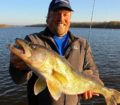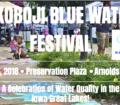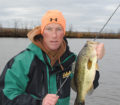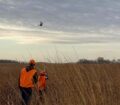By Steve Weisman
This past week I had the opportunity to participate in both the Prairie Lakes Conference PLC) and the Okoboji Blue Water Festival. It brought together the opportunity to showcase the best clean water practices, while at the same time focusing on the many challenges we must do more. Because if we run out of water, what do we do? That is certainly not a pleasant thought.
The PLC was a combination of informative workshops: the science of lakes; landscape and watershed science; soil health; the social, political and economic aspects of lake management; aquatic plant and algae management; nutrient management; an overview of local and state management programs; case studies of prairie lake management projects; and fisheries management.
In addition, a morning and afternoon were set aside for tours of best conservation and clean water practices in the Iowa Great Lakes area. These tours allowed us the opportunity to actually see the science described in the workshops put into practice.
Although the workshops were outstanding, I think I enjoyed the Thursday morning “field day” probably the most. Hosted by the Dickinson SWCD and the Iowa Learning Farms, the morning consisted of a tour of the 350-acre restoration project surrounding Okoboji Vu Golf Course. Upon my arrival, I was amazed at the beauty of the tall grass prairie and the rainbow of colors provided by the forbes and wild flowers. Interspersed through the property were 20 restored wetlands that along with the deep roots of the prairie grasses are effectively curbing surface water and nutrient runoff from the 2400-acre watershed during large rain events.
During the visit, members of the Iowa DNR, the Iowa Natural Heritage Foundation and Iowa Learning Farms talked us through and showed us how this property has become this “prairie and wetland gem.”
At one time, this was row crop land and during large rain events, much of this water would run off the fields and enter West Okoboji near Sandpiper Cover. I can remember the flood year of 1993, and seeing an aerial view out from Sandpiper Cove with a huge plume of brown water, sediment that had run off with the heavy rainfall. Of course, with the sediment came the nutrient runoff.
It took years for it to happen, but plans were in place to try to purchase this property, and by 2010, this acquisition had begun. Now this parcel of land protects the lake and combined with the conservation work on the golf course, is an excellent example of what can happen when people in an area work together to make things better. In this case, the end result is protection of the soil and clean water!
Later in the morning, Matt Helmers of Iowa Learning Farms showed ways an individual landowner can limit ground water and nutrient runoff and soil erosion. It is a practice called Prairie Strips or Edge of Fields practice. By finding strategic locations on the land where surface water will run off, landowners can place prairie strips and edge of field practices that will limit the water and nutrient runoff. Edge-of-field practices involve drainage water management, bioreactors, buffers, saturated buffers, denitrifying wetlands, terraces and sediment control. Although this was simply shown on a small scale during the morning, on Friday afternoon, people had the opportunity to attend a demonstration on the east side of Big Spirit Lake, where landowner Eric Hoien has implemented edge of field practices and has seen an incredible reduction of nutrient runoff into Big Spirit Lake.
Friday afternoon also included other optional field tours that gave opportunities to see best conservation practices.
I would say the PLC was a conference of what I would call the good, the bad and the ugly. It displayed the good we have done in conservation and improvements in water quality. It also showed the bad, the fact that we have way more to do than what we have done when we talk soil quality and water quality. Finally, we got to see the ugly, what things look like when we don’t address water quality on both urban and rural levels. Too often when we think of water runoff issues, we don’t think of the urban runoff where often times there is nothing but cement on which the rain can fall, and obviously water does not infiltrate traditional cement. Urban runoff is a huge issue. So many challenges, but there are so many opportunities to make things right. After all, if we don’t have clean water, what do we really have?
Photos by Steve Weisman
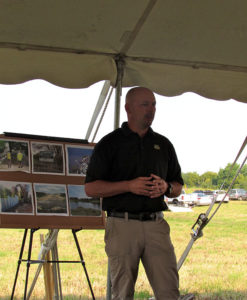
Iowa DNR fisheries biologist Mike Hawkins shares the history of the Okoboji Vu Golf Course Wetland Restoration project.
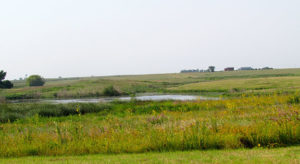
Tall grass prairie and forbes not only provide a beautiful sight, but combined with the wetlands limit the surface water and nutrient runoff into West Okoboji.

Matt Helmers of Iowa Learning Farms discusses drainage water management, bioreactors, buffers and saturated buffers.

